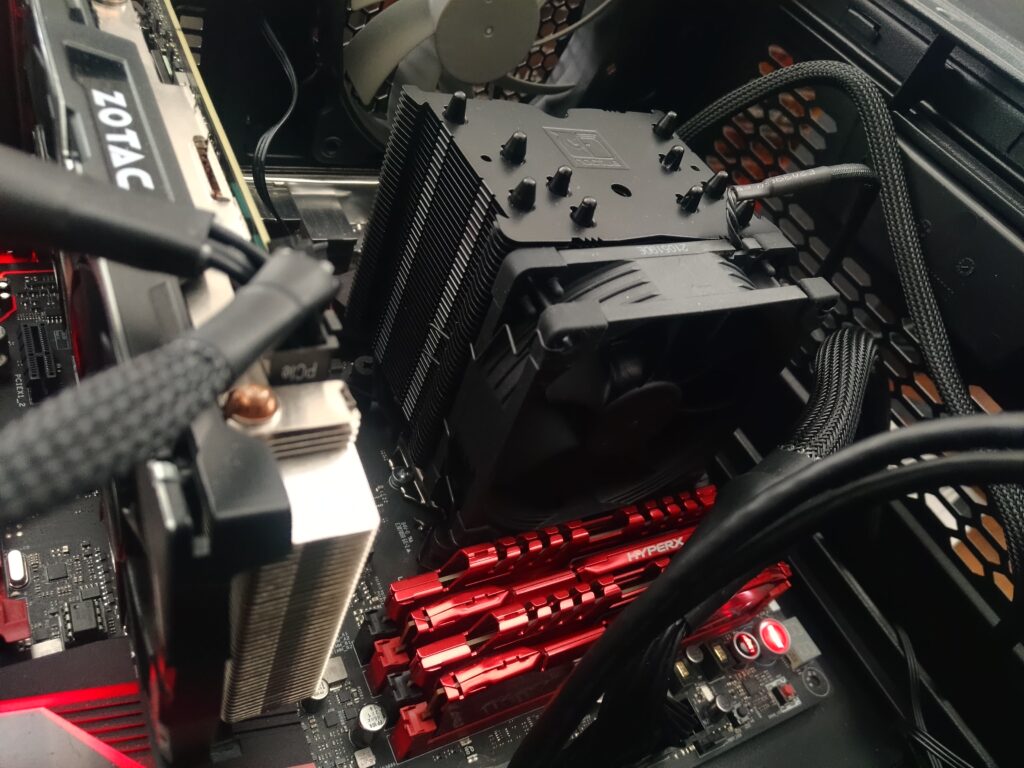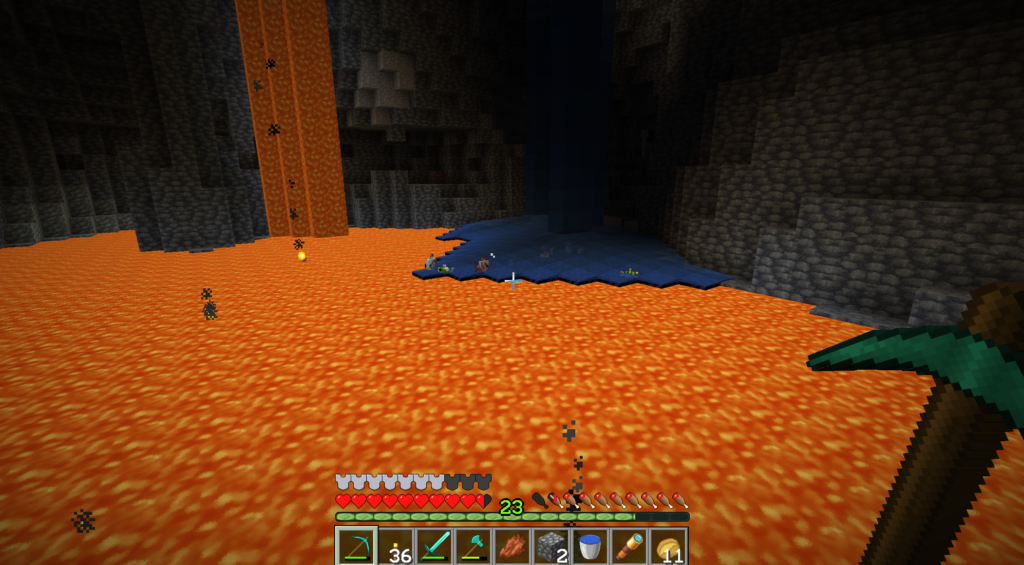Over the last few months, I completed my first solo(ish) PC build under the tutelage of our Multimedia Designer James Bailey. What started as simply something to do with spare parts quickly took on a life of its own and culminated in putting together a Minecraft server for my friends to enjoy. At every step of the way I found myself reminded of our work at Trent Online, and what it takes to develop and refine our digital learning experiences. Ideating, planning, building, testing, fixing, iterating, failing, succeeding—it was quite the wild ride. Below you’ll find some of my more coherent musings.
Don’t Force It
Originally the plan was the use all my spare parts and acquire any outstanding items needed for the build very cheaply, either through online sales or by picking the bones over at ReBOOT Canada. My first fan no longer worked with the motherboard it came with. The second fan was too old and would have needed a hard-to-find adapter, and the third didn’t have the right brackets to secure it to an Intel board. After weeks of scrounging and swapping and returning, I finally decided to cough up a hundred dollars and buy myself a new fan with all the accoutrements I’d ever possibly need. Whether you’re trying to save a buck or trying to do things “the way you used to” in an online class—it can often save time and trouble to take a step back and ask yourself the following:
- How much time will it take to retrofit this old piece into my course?
- Has enough time passed where it is now necessary for me to re-assess the functional needs of my course?
Sometimes it’s a case of the design informing the material. Other times the design will need to lend itself to one key immutable piece of content. Knowing what the sacred cows are at the outset of any project will save you the time and energy spent trying to jam square pegs into round holes.

Freedom to Fail
The first power supply unit I ordered was a lemon. I had also bought the wrong case for my motherboard’s form factor. The new case didn’t fit the wireless card I had and, as previously mentioned, it took four (4) fans before I finally attached one that functioned properly. Even after I finally got the computer to power up, it didn’t recognize my hard drive. All of this is simply to say that I messed up, a lot, in every stage of my build. The only thing that kept me from succumbing to the annoyances of my failures was reminding myself constantly that this was my first foray into building a computer for myself from scratch. Even though I kind of knew what I was doing—even with the tutelage of my colleague—mistakes were made. It took a couple screw ups before I got there, but eventually I mocked up the computer I was envisioning using a website that would automatically check to make sure there wouldn’t be any compatibility issues with all the pieces I needed to fit and work together.
It’s the same reason we put together a course map before building out modules in Blackboard. One thing I’ll get asked a lot when setting out to develop (or re-develop) an online course is “why can’t we just build it in the LMS straight away?” The short answer is that it’s far easier to make a change on paper than it is mid-build. As well, changing one piece midway might mean that something we constructed weeks ago no longer functions as intended (either scholastically, technologically, or both). The drafting phase builds in that time and space to experiment, make errors, and come up with working solutions. This isn’t to say you can’t build an airplane while you’re flying it, just that most people shouldn’t.

Consult the Experts
After getting the computer stable and running, after muddling my way through various tutorials, I had created a functioning Minecraft server for my friends to enjoy. Researching the initial set up meant I needed to develop a rudimentary understanding of how my computer’s firewall was interacting with my home network and the internet at large. More than just getting the thing up and running, I wanted to make sure things were safe and secure for everyone that would be playing on the server. It meant I needed to be aware of exactly what I was getting us into and what could maybe possibly go wrong (things like Log4j, for example). Between consulting friends of mine that are system administrators and finding a Discord server specifically geared toward this exact topic (Minecraft server administrators), I was able to get some answers, clear up some misconceptions, and glean insights from people that had been down this exact road before.
If you’re building or designing a course the Admincraft Discord might not be the best place to seek guidance—but I daresay our robust institutional support network has you covered:
- Teaching and Learning (for educational leadership and online learning)
- IT (for digital infrastructure and technical queries)
- Learning and liaison librarians
- Centre for Academic Testing (professional proctoring services for accommodated exams and exam invigilation)
- Careerspace (for experiential learning)
If you have a specific question in mind or are just looking to bounce ideas off someone—it never hurts to ask!
Craft Your Community
A big part of managing my fledgling server meant listening to the wants and needs of my friends and then delivering on it. Whether it was little things like server names and icons, or more critical changes like the amount of dedicated RAM, I noticed that actioning stuff and making incremental changes didn’t go unnoticed—facilitating and negotiating the experience with my friends was appreciated. The same goes for any online learning experience; conversely, if you take a “set it and forget it” approach after the thing goes live, that lack of TLC might not bode well morale-wise. As part of our course development process in Trent Online, we’ll often find ways to craft additional spaces and check-in surveys so that instructors can hear from the students before the course is over (giving them the opportunity to make improvements or adjustments on the fly). Ensuring members of your learning community feel heard and actioning on that feedback communicates a shared understanding of values.
In Closing
What did I learn? I’ll summarize in a bulleted list:
- If it feels like you’re forcing it ask yourself why that might be—it might be a sign that you need to re-think your strategy.
- Take feedback to heart and use it to improve things when you can, even if it’s just incrementally.
- When in doubt, reach out—everyone starts somewhere, there’s no shame in seeking guidance.
- Things worth doing are usually quite challenging. Don’t be afraid to make mistakes along the way!
If you’re curious about what Minecraft has to offer in a scholastic capacity, you can check out Minecraft: Education Edition (like this lesson about Anishinaabe culture). If you’d like to chat with an elearning designer (possibly about Minecraft), you can do so through our online booking system.

